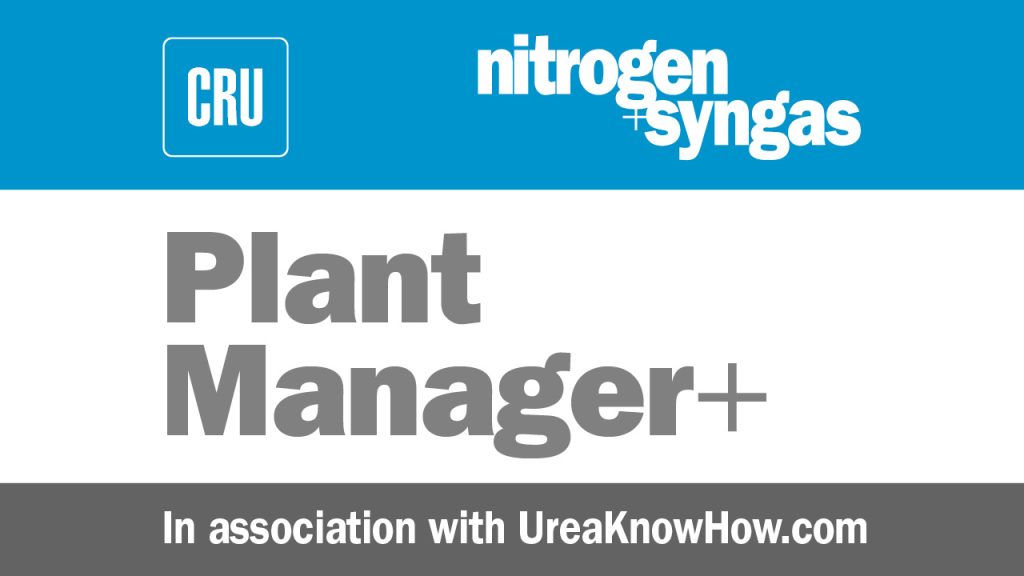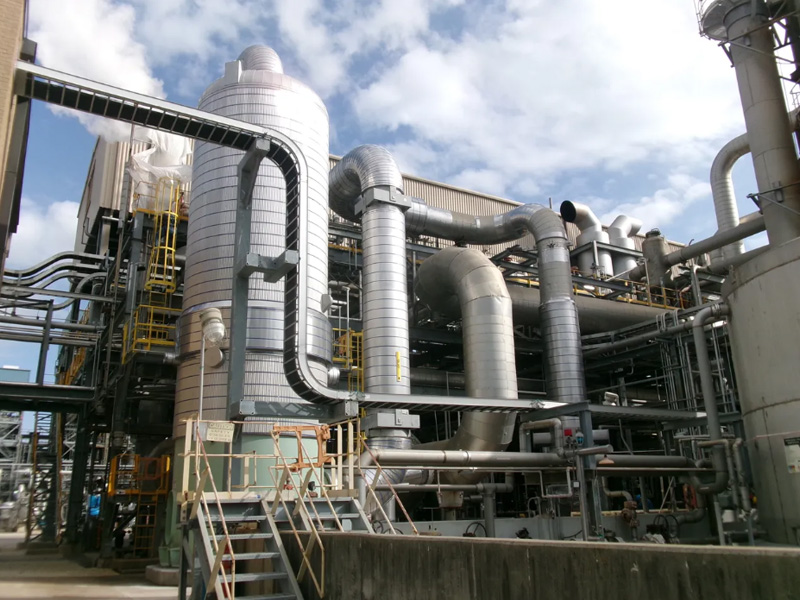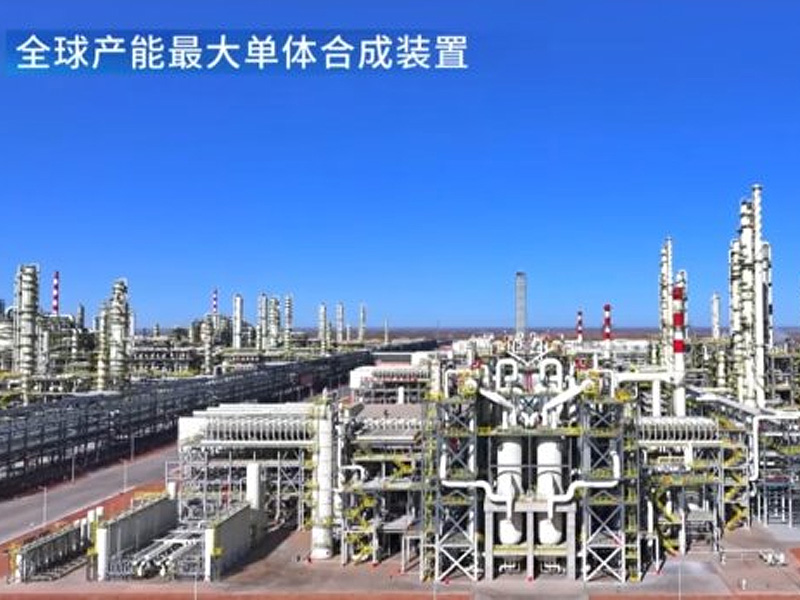Nitrogen+Syngas 323 May-Jun 2013

30 June 2013
Problem No. 18: HP stripper passivation air
The high pressure CO2 stripper, invented by Petrus J.C. Kaasenbrood of Stamicarbon in 1967, revolutionised urea process technology, reducing the energy consumption figures of urea plants by roughly a factor two. Further, Stamicarbon and Sandvik developed the austenitic stainless steel 25-22-2 to handle the relatively tough corrosion conditions in a HP stripper. The HP NH3 stripper, introduced by Saipem, operates at higher temperatures than a HP CO2 stripper and materials of construction like titanium and zirconium, sometimes in combination with 25-22-2 were therefore applied.
Back in 1955, Joseph P.M. van Waes of Stamicarbon made the discovery that austenitic stainless steels could be protected against carbamate corrosion by adding oxygen in the urea process. The oxygen forms a chromium oxide layer protecting the stainless steel and reducing corrosion rates to acceptable levels. This discussion explores the experiences with different amounts of oxygen in the HP stripper in various urea processes.

Mr Le Ngoc Ban of Phu My Fertilizer Plant in Vietnam starts up the following discussion: Can anybody tell me how long we can keep running our urea plant without HP stripper passivation air? Do I need to reduce the plant load or adjust any high pressure process parameters? Are there any warnings? What is your experience? Our plant is Saipem process technology.
Mr Riaz Ahmed Khan of Agritech Limited in Pakistan shares his experiences: Constant supply of passivation air is a must to ensure that a chromium oxide layer is intact on steel. This layer can be damaged during the process so there should always be a supply of air, oxygen in particular, to repair the layer. All plant equipment has a certain degree of resilience, fully austenitic steel is more sensitive than for example duplex steel. You can operate the plant without passivation air for 30-40 mins for austenitic steel and for duplex maybe a little longer. During operation of the plant without air supply, keep an eye on the colour of the melt/ product. If there is any change, stop immediately.
Mr Muhammad Farooq of Agritech Limited in Pakistan adds: It is most important to stop the urea plant if air failure has occurred to the synthesis loop. Most licensors recommend a maximum time of 10-15 minutes only, because once oxygen deficiency occurs it will break the chromium oxide layer and, not only the HP stripper, but the whole synthesis loop will need to be re-passivated. This is not only a HP stripper requirement, it is the requirement for the whole synthesis loop. Moreover, monitoring of oxygen should be carried out at the vents of the recovery section to check for explosivity.
Mr Mark Brouwer of UreaKnowHow.com in the Netherlands contributes to the discussion: I agree with the critical supply of oxygen to stainless steel or duplex strippers. But with zirconium strippers the situation seems less critical. As I understand it, the first bi-metallic stripper operated without any passivation air with no active corrosion. Only after corrosion problems (crevice corrosion) occurred did Saipem advise the addition of passivation air to the stripper to reduce the corrosion rates.
Mr Rajkumar Kulkarni of RCF Ltd in India shares his experiences: Plants (Saipem) can definitely be operated without passivation air (on the HP stripper) for a limited period. The requirement is to keep the stripper bottom temperature below 202°C, as it is known that corrosion is highly pronounced at high temperature of stripper bottom outlet solution. I do not agree with the times mentioned for sustaining the operation mentioned elsewhere. It is a very complicated phenomenon and very difficult to make an estimate. Better to be safe than end up with a permanent problem.
Le explains further his concern: I think this situation is quite difficult because we really do not know the consequences of running the stripper without oxygen passivation for some time. Some plants are lucky because their licensor gives them recommendations, but others don’t. From a process point of view, we try to keep the plant running as long as possible, but the lifetime of equipment items is also important.
I hope that I can learn from more experiences from other plants operating in this situation so that we can run our urea plant more safely and efficiently.
Mr Sam QR of Fertco in India asks a further question: I would like to know the case where indirect air supply is sent to the stripper in the Urea Casale design. How do you monitor the air supply from the reactor pressure control valve to the stripper? In such plants even though the air supply is there to the CO2 compressor, O2/air supply is not ensured. Is it assumed that inerts shall go through the vent?
Mark replies: For assuring a passive chromium oxide layer the amount of oxygen in the liquid phase is important, not the amount of oxygen in the gas phase.
Of course under equilibrium conditions there is a direct relation between the amount of oxygen in the liquid phase and gas phase. But do equilibrium conditions exist in all areas in the urea synthesis section?
For example, in a Stamicarbon CO2 stripping plant oxygen is dosed only via the CO2 feed. This oxygen meets liquid in the stripper, condenser and reactor and will dissolve more or less in the liquid phase thus taking care of the passive layer.
I believe one needs experience to find the minimum amount of oxygen required in the CO2, to ensure sufficient oxygen in the liquid phase at the most critical area of the urea synthesis section (in a Stamicarbon plant it is the top of the stripper, where temperature is high and partial oxygen pressure in the gas phase is lowest). I believe a similar situation is valid for a Saipem or UCSA process.
Mr Majid Mohammadian of OCI Nitrogen in the Netherlands returns to the original question: Referring back to Le’s original questions, we had the same discussion at the UreaKnowHow.com workshop in Kuala Lumpur at the Nitrogen+Syngas Conference and there were different opiniors on that in Saipem plants.
As per their experiences, some stopped the plant after one day, others after 15 minutes or 30 minutes and some stopped immediately after air was cut to the stripper.
At present, what is the procedure in your plant in the case of passivation air failure to the stripper and is there any proven reason for that?
Le replies: In my plant, we don’t have a procedure in case of stripper passivation air failure, but some years ago, we faced this situation and at that time we kept the plant running for about 4 hours, until the air compressor restarted. The same year, we opened the stripper for inspection and found a little corrosion in the bottom, but our inspector concluded that it occurred due to not enough air in general, so we doubled the amount of air from that moment. What is your experience?
Majid replies: Actually, in Stamicarbon plants we are not allowed to work without passivation air and in the case that the oxygen percentage is less than 0.5 vol-% in the CO2 feed for 15 minutes we have to stop the plant. This is the case for 25-22-2 material. For Safurex material we have the same time but the oxygen percentage is 0.3 vol-%.
Mr Easa Norozipour of Khorasan Petrochemical Company in Iran shares his experience: In our Stamicarbon CO2 stripping plant, the normal operating range of oxygen after the hydrogen converter is between 0.6 and 0.65 vol-%. The oxygen content should not drop below 0.6 vol-%. In this case, according to licensor instructions, when the oxygen content remains below 0.55% for more than five minutes the plant must be shut down, because active corrosion can occur.
Mr Saadat Motamedi of Pardis Petrochemical Company in Iran contributes to the discussion: I think the shut down of the plant is according to the licensor instructions and it depends on the material used in synthesis loop.
Mr Jithendra Kumar of FERTIL in United Arab Emirates shares his experiences: I have had experience in my previous plant, it was Saipem technology, running for more than 12 years without adding passivation air to the HP stripper. Thereafter, frequent tube sheet leakage and corrosion occurred and so we provided passivation air via a dedicated compressor to the HP stripper. The stripper was bimetallic material (2RE69 and zirconium).
Mr Muhammad Kashif Naseem of SABIC in Saudi Arabia shares his experience: In our Stamicarbon plant, the passivation air commonly used is 0.6 to 0.7 vol-% but can be varied upon annual corrosion tests of vessels.
| This series of discussions is compiled from a selection of round table topics discussed on the UreaKnowHow.com website. UreaKnowHow.com promotes the exchange of technical information to improve the performance and safety of urea plants. A wide range of round table discussions take place in the field of process design, operations, mechanical issues, maintenance, inspection, safety, environmental concerns, and product quality for urea, ammonia, nitric acid and other fertilizers. |






